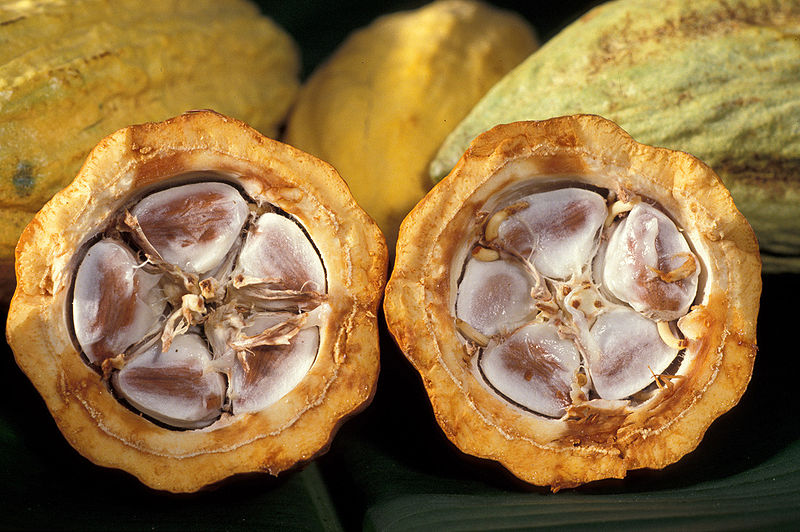We're open daily! View holiday hours
Science News
Yum! Chocolate Genome
September 21, 2010

Mmmmmm. Chocolate.
A $17 billion industry in the US, chocolate tantalizes our taste buds, but it can easily fall prey to agricultural disaster. Fungal disease alone can wipe out 80 percent of a crop of cacao trees.
Fear not, chocolate lovers—help is on the way! Last week, scientists and rival candy bar companies announced the sequencing of the cacao tree genome. The U.S. Department of Agriculture hopes that the sequencing will help build stronger trees, better equipped to resist droughts, diseases, and pests that threaten this vital (and delicious) agricultural crop.
The Mars and Hershey companies both led teams of cacao sequencers, in hopes that understanding the genome will also lead to tastier and healthier chocolate.
Chocolate comes from the cacao tree, Theobroma (meaning “food of the gods”) cacao. The tree seeds are processed into cocoa beans that are the source of cocoa, cocoa butter and chocolate. Num!
Through the 1980s, Brazil supplied most of the world’s cocoa, but a fungus decimated the crops. Today, West Africa grows 70 percent of the world’s crops. Most are managed by small farmers, whose livelihoods could be wiped away instantly if their crops came under attack.
As dark and complicated as chocolate may seem, it’s really not. The cacao genome, according to the New York Times
contains about 420 million DNA units, represented by the letters A, C, G and T. That is fairly small for a plant. The human genome has about three billion units.
Mars and their team are currently preparing their genome sequence for publication. Hershey and their team’s sequence is already under review for publication. May the best candy bar win!
Actually, it turns out we’re all winners. Again from the New York Times,
Scientists in both groups say that cocoa farmers, candy companies and chocolate lovers will benefit from having two sequences, of different varieties of cacao, that can be compared.